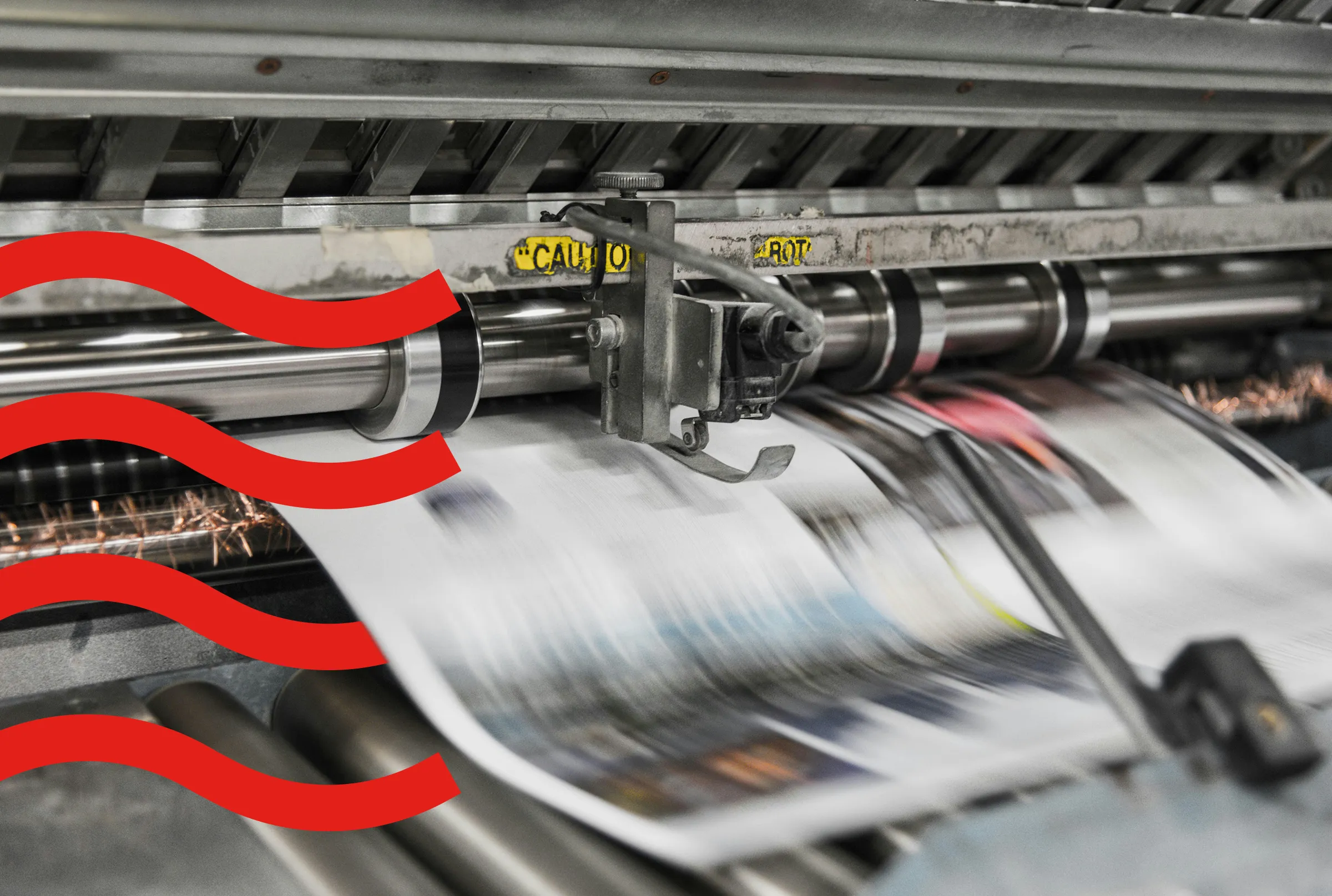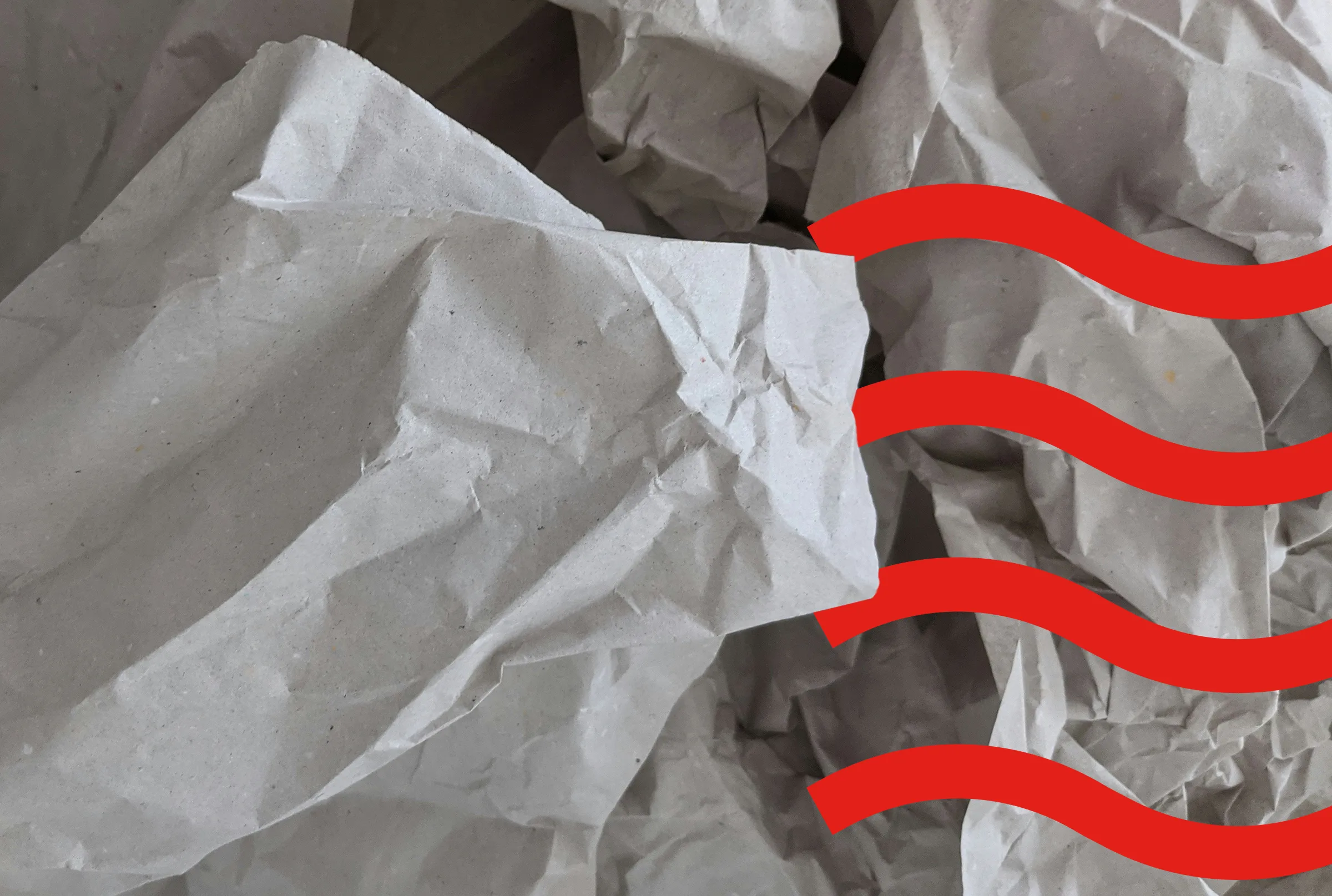Reinvention as a gateway to sustainability

We need to innovate to create a more sustainable world
Innovation can open up new revenue streams and create competitive advantages as well as deliver sustainable outcomes. Every business should consider broadly how sustainable innovation can be enacted at multiple levels in the production and consumption of goods and services.
Resource efficiencies, sustainable materials, keeping ahead of regulation, improving environmental governance, are part of a growing list of reasons to seek out reinvention where you can find it.
Let’s focus on mail because despite there being many examples of innovation it is still considered traditional.
In the manufacture of mail how can we be sustainable and smarter?
Much of the examples we will explore here happen in the early stages of making mail. For customers of mail, it is often looking at paper and ink supply.

Mail and ‘reinvention’
1. Water usage
Paper processing and printing uses water, lots of it.1
Yet, there are paper mills that can return the water used back to the environment safely. Indeed, 93% of the water used in the European paper industry is returned in good quality with the remainder either evaporated, staying within the product, or bound up in solid waste. This was not always the case, and since the 1990s there have been radical improvements within the industry in paper-making techniques and water treatment.
2. Bleaching
In the manufacture of paper, bleaching is an important process.
Mills mainly use ECF bleaching.2
This technology was taken into use to replace chlorine with chlorine dioxide in the first stage of bleaching, and it virtually eliminates the formation of toxic compounds like dioxins and furans.3
ECF bleaching, in combination with oxygen delignification produces strong fibres. This, in turn, enhances the ability to recycle the products made from the pulp and contributes to more efficient use of wood resources.
The most environmentally safe technology available to pulp mills is Total Chlorine Free (TCF), which uses no chlorine compounds.4 Instead, the bleaching process is supplemented with oxygen, ozone and/or hydrogen peroxide. These technologies make paper making a much cleaner process and are now incredibly widespread.
These technologies make paper making a much cleaner process and are now incredibly widespread.

3. Energy
Beyond water treatment some paper mills are finding inventive ways to recover energy.
For example, a pulp mill with a modern recovery boiler, such as Świecie in Poland, can generate up to 100 kilowatt hours of excess electricity per tonne of pulp. This excess can be fed into the power grid, allowing it to participate in the electricity balancing market. This market helps stabilise the power grid across Europe by balancing out fluctuations in demand and generation.
And finally let’s talk about ink...
4. Inks
Further reinvention in the production of mail can be seen in the use of biodegradable inks.
Conventional ink uses mineral-based oils with pigments containing metals.5
When packaging such as card or paper biodegrades, the oils and pigments used in the printing process do not biodegrade and so contribute towards environmental pollution.
However, different types of inks have been developed over the years and are used by different companies to make products more eco-friendly and biodegradable6, while still maintaining the correct colour and longevity.
Biodegradable inks7 use natural vegetable oils, such as soya, sunseed or rapeseed oil. These types of inks produce vivid colours and are generally more cost-effective than traditional inks. This is because the ink flow spreads more efficiently and, therefore, means less ink is used when printing.

Seek reinvention to mobilise sustainable change
Here are just a few examples of how processes can be shifted and circular thinking drives innovation and reinvention.
Reinvention involves using the principles of circularity to change the materials used and the processes to create an end-product. Reinventing inks with the introduction of algae or soy, or reinventing power systems to be renewable and clean can lead to not only great environmental outcomes but commercial ones too.
Marketreach has resources available for brands to better understand how mail can be an effective and sustainable choice within their marketing mix, and to help them produce more sustainable direct mail campaigns.
The print sustainability body ‘Print Green’8 also has a whole host of guidance, tools and education to help brands and agencies design campaigns with circularity in mind.
https://www.marketreach.co.uk/sites/default/files/sustainability/Marketreach_Sustainability_Guide.pdf
- https://www.nikitapapers.com/blog-detail/how-eco-friendly-paper-manufacturers-are-reducing-water-usage
- https://www.storaenso.com/-/media/documents/download-center/documents/sustainability/pulp_bleaching_fact_sheet_2017.pdf
- https://www.storaenso.com/-/media/documents/download-center/documents/sustainability/pulp_bleaching_fact_sheet_2017.pdf
- https://www.plot-it.co.uk/files/sustainability_guide.pdf
- https://supplycompass.com/sustainable-fashion-blog/the-state-of-packaging-inks/
- https://inside-packaging.nridigital.com/packaging_sep20/eco_friendly_inks_colour
- https://inside-packaging.nridigital.com/packaging_sep20/eco_friendly_inks_colour
- https://printgreen.org/





